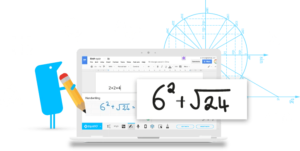3 Ways to Reboot Remedial Math Class

By Lawrence Smith
Math teachers today are grappling with the challenge of adjusting to new, rigorous college and career-ready standards, and supporting their students as they make the transition.
When students struggle, the status quo response is to place them in remedial math–to slow down the pace of instruction.
Ironically though, for many students the very experience of remediation can further their belief that they are incapable of math success.
As a math coach, I’ve seen firsthand how demotivating and frustrating it can be for students who feel like they’re incapable of doing the work. There’s clearly a disconnect when the de facto “solution” contributes to persistent achievement gaps in math. So what if we turn that old idea on its head? What if the best approach for improving math outcomes is to increase the rigor–precisely for the students who struggle the most?
Increasing Math Instruction Rigor
For experienced teachers, this is a counterintuitive shift away from the typical response when students struggle. But repeating and slowing down content ultimately does a disservice to students, trapping them within their own negative perception of their math ability. Instead of shying away from challenging subjects like Algebra 1 or Math 1, a growing number of math educators in districts like mine are actually increasing the rigor of instruction, with a teaching model based on an architecture of intensification. Here’s how it can help:
Intensify the Learning Experience: The delivery of remedial math instruction has the same problem as an annoying ad on TV–as consumers, we tire of a subject if we’re presented with the same information repeatedly. With traditional remediation, students experience no change in how the information and concepts are communicated to them at the exact moment when they would benefit the most from stimulation and new challenges. Too often, remedial education causes students to disengage from the process of learning.
Intensified instruction can help students recall and develop their strengths in math, and fortify learning behaviors and practices that extend far beyond simply memorizing an answer or series of steps.
Motivate the Learner: Historically, math success was thought to be a function of ‘hard skills’ and cognitive strength. More recent research, like that of Angela Duckworth and Patrick Quinn, has shown that non-cognitive skills are actually highly correlated with a student’s ability to succeed in the difficult subjects that help predict college readiness. For both middle and high school students, Duckworth and Quinn found a strong positive correlation between students’ tenacity (“grit”) and their GPA.
This is where teachers working with struggling learners run into challenges. While traditional remedial methods set out to reinforce a student’s skills and ability, they often have the exact opposite effect. One of the biggest barriers to success in difficult subjects–especially for historically underserved student populations–is not an external roadblock, but a student’s belief that they cannot succeed. By fortifying a student’s resolve and belief in their own abilities, intensified instruction can help them to master difficult concepts.
Teach Conceptual Learning: Too often, remedial instruction tends to assume that students just want to know the correct answer. While this is true at a surface level, shortcuts and memorized answers ultimately frustrate students–they want to know that the process they are learning is not only accurate, but also reproducible. Intensified instruction gives students multiple entry points to a given problem, prompting critical thinking and connecting to the thought processes that are most relevant for each student. Intensification improves their willingness to wrestle with tough concepts, and to go beyond whether the solution is right or wrong.
Case Study: Hillsborough County Public Schools
Educators and students alike are making the transition to rigorous new standards and aligned assessments in an effort to improve outcomes among all students, regardless of their background, family income or race. What we’ve seen in Hillsborough County Public Schools (HCPS) in Florida, where my school is located, is that doubling down on high standards–instead of slowing down and focusing on repetition–is the best way to help struggling learners.
Five years ago, HCPS was below the state average on the passing rate on end-of-year algebra assessments and behind peer districts such as Broward County. To increase the number of students passing Algebra I, HCPS launched a major initiative to help more struggling students achieve success in Algebra I. After completing a successful one-year pilot in five schools in fall 2012, the district implemented the Intensified Algebra intervention system for teaching and learning from Agile Mind, district-wide the following year.
According to the most recent data, since Intensified Algebra it was implemented district-wide, the pass rate on the Algebra I standardized test has increased by 21% —the highest increase among similar districts across the state. At King High School, our school nearly tripled the percentage of students passing the exam in the two-year period we have been using Agile Mind.
This marked improvement was astonishing for the students who routinely underachieved. We were able to achieve these results by increasing the rigor of math instruction specifically to help students build non-cognitive skills and confidence, at the same time they were building their math skills. By shifting from a strategy of remediation to one of intensification, we can help students develop a stronger foundation in the skills they need to be successful for college and beyond.
For more, see:
- Why Should We Use Case Studies in the Math Classroom?
- “With Math I Can” – Changing Our Mindsets About Math
- Talking Math: 100 Questions That Help Promote Mathematical Discourse
Lawrence Smith is an instructional coach at King High School in Tampa, Florida. Follow them on Twitter: @MrLcSmith.
Stay in-the-know with all things EdTech and innovations in learning by signing up to receive the weekly Smart Update.







Martin Sumichrast
Hi, Its really very interesting post. The ways to reboot are very interesting, love it.
Cheers!
Michael Smith
It gives teachers that really want to make a change, the (research based) tools necessary to make that change. It takes a lot of work and dedication to implement with extensive training. Teaching is not the same anymore, especially with new standards. This program complemented those shifts at the right time. Teachers (such as the author Lawrence Smith and Donna DeSena) have worked very hard to make it work and the results are showing. We are not only proud of our teachers but our students that see we are trying to make their future something they can now see has hope. We are now hearing students say mathematics is their favorite subject. That makes it worth the effort.
Gerry
Sounds great, and I would like to learn a lot more. What does increasing rigor look like? I’d love more examples and real world activities. Where can I go to gain expertise in these new methods? Btw I’m a teacher.
Replies
Erik Day
Hi Gerry, glad to hear you liked this article! And thanks for the comment. If you're looking for more, we've compiled a list of all of our "math teacher resources" here: http://www.gettingsmart.com/tags/math-teacher-resources/. Hope that's helpful!
Best,
Erik